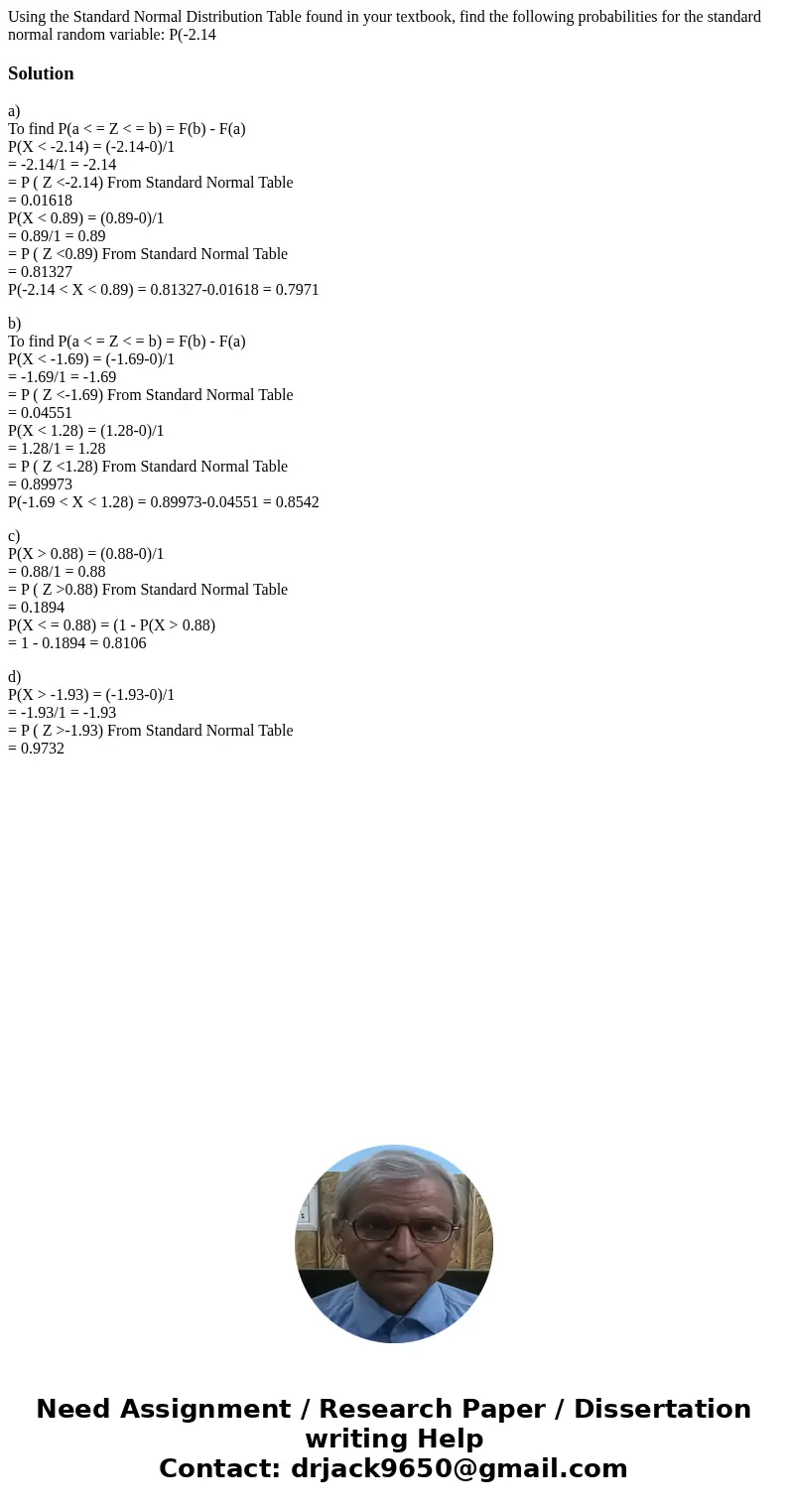Using the Standard Normal Distribution Table found in your t
Solution
a)
To find P(a < = Z < = b) = F(b) - F(a)
P(X < -2.14) = (-2.14-0)/1
= -2.14/1 = -2.14
= P ( Z <-2.14) From Standard Normal Table
= 0.01618
P(X < 0.89) = (0.89-0)/1
= 0.89/1 = 0.89
= P ( Z <0.89) From Standard Normal Table
= 0.81327
P(-2.14 < X < 0.89) = 0.81327-0.01618 = 0.7971
b)
To find P(a < = Z < = b) = F(b) - F(a)
P(X < -1.69) = (-1.69-0)/1
= -1.69/1 = -1.69
= P ( Z <-1.69) From Standard Normal Table
= 0.04551
P(X < 1.28) = (1.28-0)/1
= 1.28/1 = 1.28
= P ( Z <1.28) From Standard Normal Table
= 0.89973
P(-1.69 < X < 1.28) = 0.89973-0.04551 = 0.8542
c)
P(X > 0.88) = (0.88-0)/1
= 0.88/1 = 0.88
= P ( Z >0.88) From Standard Normal Table
= 0.1894
P(X < = 0.88) = (1 - P(X > 0.88)
= 1 - 0.1894 = 0.8106
d)
P(X > -1.93) = (-1.93-0)/1
= -1.93/1 = -1.93
= P ( Z >-1.93) From Standard Normal Table
= 0.9732

 Homework Sourse
Homework Sourse